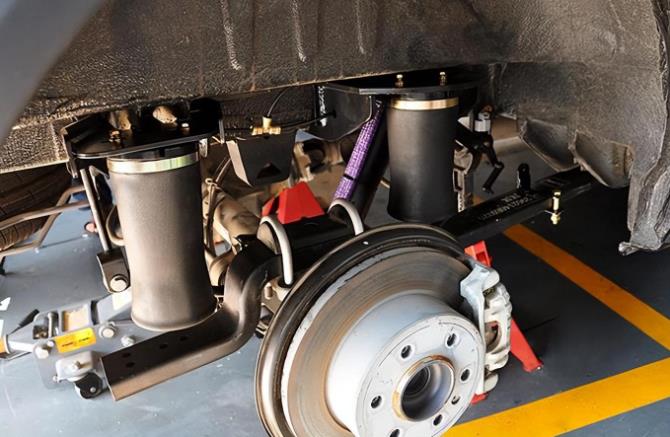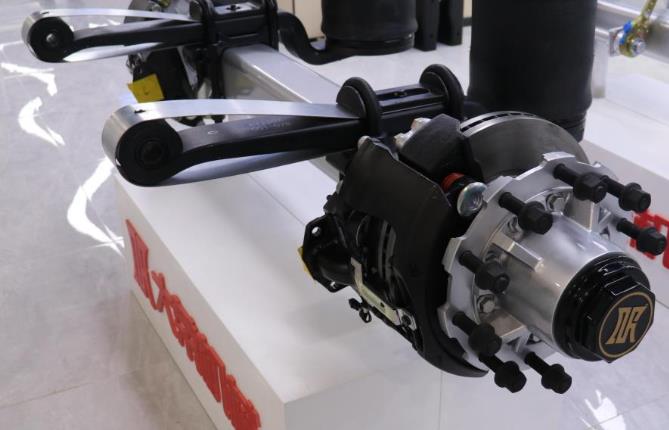What are the common types of trailer air suspension?
Air suspension has been used in automobiles for a long time. As early as 1914, the first automobile product equipped with air suspension came out. In 1944, air suspension began to be practically applied on buses and coaches. In the 1960s, air suspension was widely used in Europe, America and other countries. The field of commercial vehicles was rapidly popularized. In the 1990s, air suspension was introduced into China, and it began to be applied in the field of passenger cars and buses, and gradually extended to the field of freight vehicles.

Compared with the traditional suspension, the air suspension is light in weight and small in weight, which is in line with the "lightweight" industry trend; it has excellent shock absorption effect and good cargo protection effect; the height can be adjusted freely, and it can realize single or multi-bridge lifting, While saving energy and reducing consumption, it is convenient for loading and unloading goods; it is also beneficial to reduce tire loss, protect vehicle chassis components, and reduce comprehensive vehicle costs to a certain extent.
Common Air Suspension Classifications
1. European style
The biggest feature of the European-style air suspension is that the guide arm is very similar to the traditional leaf spring structure, which is one-piece or multi-piece, usually directly forged, and has stronger load-bearing performance.
In addition, the guide arm of the European-style air suspension is a flexible structure, which has a certain degree of bending elasticity and stronger shock filtering performance. At the same time, it can also provide a longer movable stroke for the airbag, and the shock absorption effect is good.
2. American style
The feature of American air suspension is the rigid "I-beam" buckle guide arm, which is generally made of steel plate stamping, welding or casting. It looks like a whole and belongs to a rigid connection structure.
Since the front bracket of the American suspension is smaller than that of the European suspension, the theoretical self-weight is relatively lighter. In addition, the contact area between the guide arm and the axle of the American-style air suspension is large, which provides better lateral support for the vehicle. However, due to the relatively short stroke of the airbag, the shock absorption is slightly poor, and it is relatively more suitable for use in better road conditions.
These two types of air suspension have their own advantages, and they are also used in China, but in comparison, the application range of European air suspension is wider, which is mainly due to the relatively complicated domestic transportation road conditions and the habit of loading goods. It is also more prone to heavy loads, so it has higher requirements for the load-bearing, shock absorption and durability of the suspension. At this point, the European-style air suspension is more suitable.

How to install the air suspension
The installation methods of air suspension are mainly divided into two types: positive installation and reverse installation.
Under normal circumstances, the bottom of the vehicle chassis running mechanism is the axle, the two ends are connected to the wheels, the suspension system is connected to the upper part of the axle, and then the frame is connected to the top, and connected and installed in this order, which is commonly known as the formal installation method. A good air suspension can directly use the guide arm to bear the weight of the car body, which is stronger, has a stronger bearing capacity, and has a more obvious shock absorption effect;
Reverse mounting is to change the suspension originally installed above the axle to below the axle, and use saddle screws, clamps below, and invisible bow brackets to reinforce it, commonly known as hoisting. After reverse installation, the height of the vehicle body has been reduced to a certain extent, and the center of gravity is lower, which can not only improve the passability of the vehicle on the height-limited road section, but also load more cargo and pull more squares. It’s just that in this installation method, the axle directly bears the load, and then the force is transmitted to the suspension by the saddle screw, which is equivalent to directly using the saddle screw to bear the force. Once the screw breaks, the consequences will be disastrous.

Generally speaking, the anti-installation of the suspension of a small truck can lower the center of gravity of the vehicle, so that it will not be fluttering when running, and it will not be easy to roll over when turning; medium and large trucks have higher load-bearing requirements, and the suspension is more reliable.







